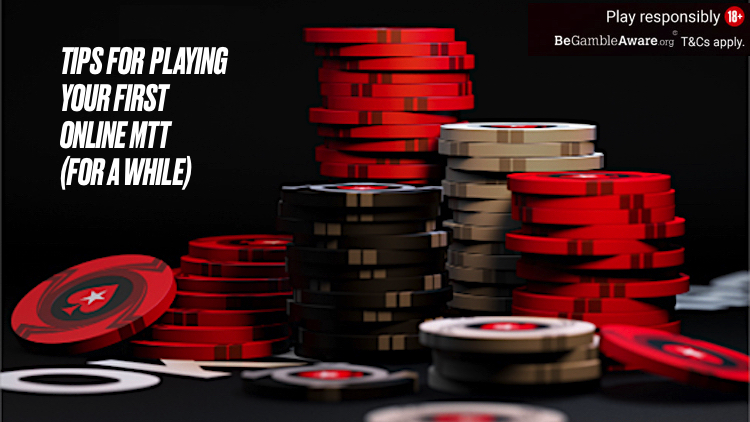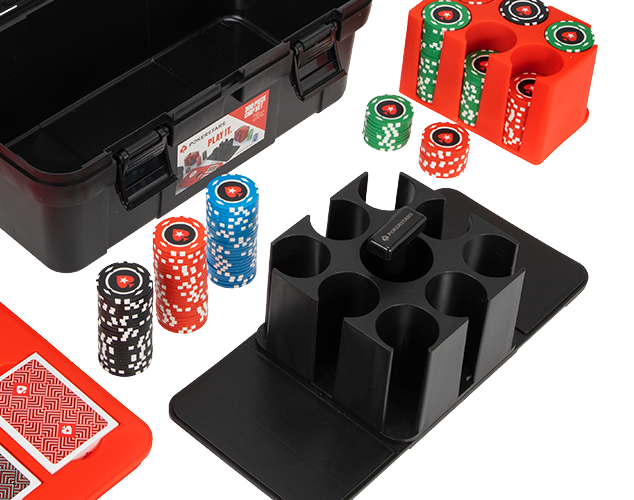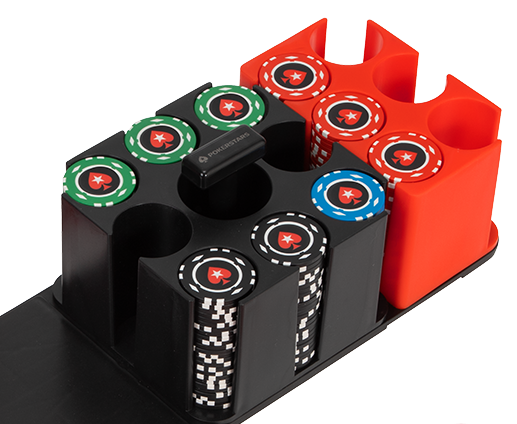Are you looking to hop into a multi-table tournament soon? Perhaps considering playing one or several of the Sunday Majors this weekend… say the Sunday Storm with its low buy-in and big prize pool?
If you haven’t played MTTs for a while, you might do well to check out some of the great tournament advice PokerStars School is offering on its Tournaments page.
There you’ll find a series of lessons, each packed with succinct tips and ending with short quizzes to help you retain the various concepts. You can go through them all in just an hour, in fact, and come out with lots of concrete, usable advice to help you succeed right away in your next tournament.
Here are some highlights from those lessons.
1. Tight often right during the early levels
Whether in a tournament or cash game, many players are often anxious to start playing hands right away once they start receiving cards. Tourneys can be especially tempting in this way because of the big starting stacks and small blinds.
The fact is, in tournaments you’re often better off playing somewhat tight to start out. That’s the advice PokerStars School gives in this handy overview of preflop strategy during the early stage of a multi-table tournament.
Playing a tight style early yields two benefits. More often than not you’ll be entering pots as a favorite. Also, you build an effective image early on as a cautious player that you can exploit later in the tournament.
2. Opening things up during the middle stages
Later on as stacks begin to become imbalanced and players start to get eliminated, you’ll find it useful to open up your starting hand range a bit.
Stealing blinds and antes becomes more profitable as well as both start to increase. Opening raises can often be smaller and still work, too, which means risking less and winning more.
As PokerStars School explains in a review of middle stage MTT strategy, the average stack starts to go down as the tournament hits its middle stage. Thus you’ll also have to start becoming wary of how different stack sizes require different approaches.
3. Solving those late stage puzzles
In a review of late stage tournament strategy, PokerStars School concentrates on a few common “puzzles” or problems that often arise as the stacks get shallower and the prizes get larger.
Specifically, they discuss a lot of preflop strategy since often in the latter part of a tournament that’s where many crucial decisions are made. They take up the topic re-stealing or putting in a reraise over an opponent’s open. They also focus on what to do when you raise and your opponent comes over the top.
What factors should you consider when deciding whether or not to call an opponent’s preflop all-in shove? Stack sizes, hand strength, the opponent’s likely range of hands, the amount of the shove, and the number of players left to act all matter here.
4. Understanding ICM and its impact on tournaments
We’ve all heard about ICM or the “Independent Chip Model” and how the concept applies to late-tourney decisions, especially at the final table where the pay jumps are the biggest.
PokerStars School offers a quick, easy-to-follow explanation of what ICM is and how to apply the concept when making those final table decisions.
You don’t have to be a math wizard or perform high-level mental feats in order to make good use of ICM, both when responding to others’ actions or when applying “ICM pressure” to your opponents.
5. Making mental adjustments during the different tournament stages
Also included among the lessons are a few focused more particularly on the mental side of tournaments. One particularly helpful discussion talks you through the different mental challenges players can face during the early, middle, and late stages of a tourney.
That’s right — you don’t just have to adjust your poker strategy during the different stages, but your mental approach, too.
Having patience and understanding the changing dynamic can be key to making the right decisions as you move from the first levels to the middle stages and approaching bubble to making the money and eventually the final table.
6. Getting into a good tournament ‘mindset’
Finally, tournaments present a unique set of mental challenges, and sometimes players who aren’t used to those challenges can find themselves thrown off their games as a result.
In a discussion of “mental game pitfalls” tournament players often fall into, PokerStars School lists a few examples of “emotional interference” that often arise. These include:
- Fear of Elimination
- Euphoric Disassociation
- Small Stack Desperation
Even just reading through these topics can help with your awareness and enable you to guard against slipping into these mental traps.
Back to Top











